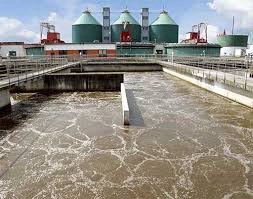Here's Everything About Turbidity in Wastewater Treatment
Introduction:
Turbidity is a crucial parameter for any water treatment process that provides an indication of water clarity by measuring the degree to which suspended particles are present. In the realm of wastewater treatment, understanding turbidity and its measurement is paramount for ensuring effective purification processes. This blog covers the fundamentals of turbidity and its significance in wastewater treatment.
Enhanced monitoring with turbidimeters:
Turbidimeters utilize 90° infrared light scattering, the technical term for which is “nephelometry”; all modern, real-time turbidimeters therefore fall under the category of “nephelometers”. Unlike total suspended solids (TSS), turbidity is not a direct measurement of suspended particles; rather, it is an indicator parameter, and a very useful one at that. The optics used by turbidimeters operate continuously, and therefore provide a real-time indication of water quality without need for user intervention. Turbidity is therefore used in place of TSS in the vast majority of applications, as its simple implementation, low maintenance, accuracy, and reliability make it more desirable for operators. Most importantly, the real-time data provided by turbidimeters allows for timely adjustments to wastewater purification processes to ensure optimal removal of particles.
Optimized Treatment Processes
The sensitivity of turbidimeters can be tuned to detect very low or very high particle concentrations in water. For this reason, they are as useful at the process intake to quantify turbidity of the raw water as they are at the distribution point to assess the quality of water to be returned to the local ecosystem. Treatment operators can use turbidity measurements at intermediate stages of treatment to assess the efficiency of filtration and sedimentation processes (for example), guiding adjustments to achieve desired water clarity. Through turbidity testing, treatment facilities can fine-tune chemical dosages and filtration rates, maximizing the removal of suspended solids and enhancing treatment efficiency.
Early Detection of Contaminants:
Turbidimeters facilitate early detection of contaminants in wastewater, providing a proactive approach to water quality management. Sudden increases in turbidity levels may indicate the presence of pollutants, operational disruptions, or sedimentation events, prompting immediate investigation and corrective actions. Early detection of contaminants and treatment inefficiencies allows facilities to mitigate potential risks to water quality and prevent adverse effects on downstream processes and ecosystems.
Compliance with Regulatory Standards:
Accurate turbidity measurement is essential for ensuring compliance with regulatory standards and environmental regulations governing wastewater discharge. Turbidimeters provide wastewater treatment facilities with the necessary data to monitor and maintain turbidity levels within permissible limits set by regulatory authorities. By demonstrating compliance with turbidity standards, treatment facilities uphold their commitment to environmental stewardship and public health, avoiding penalties and reputational damage.
Turbidity is a key parameter of interest in wastewater treatment, and therefore turbidimeters are essential tools for operators as they provide real-time, accurate measurements with relatively low maintenance requirements. By monitor turbidity levels, wastewater plants can optimize treatment processes, detect contaminants early, and ensure compliance with regulatory standards. TRITON W/S Pro is intended for wastewater monitoring and includes a real-time turbidimeter along with other targeted sensors. AUG can customize TRITON W/S Pro to accommodate any number of additional turbidimeters to simultaneously monitor various points in the wastewater treatment train.
